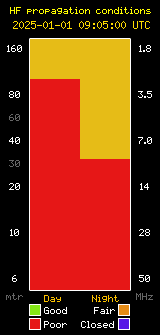
Amateur videos on amateur radio are becoming the go-to sources for current news. (Image created by DALL-E AI engine in ChatGPT 4)
In recent years, there has been a notable shift in the landscape of amateur radio journalism. Traditional print magazines and journals, once the cornerstone of the ham radio community, are increasingly becoming a rarity. This decline is part of a broader trend seen across many fields, where digital media is supplanting print media.
As a result, much of the latest news, technological updates, and exciting new projects in the amateur radio world are moving to more contemporary platforms like YouTube. This shift has given rise to a number of popular YouTube channels that have become the new go-to sources for amateur radio enthusiasts. These channels offer a diverse range of content, from in-depth tutorials and product reviews to real-world applications and community interactions.
Here is a list of some prominent YouTube channels that are leading this digital transformation in amateur radio journalism.
If you have others you like, please leave them in the comments!
- Ham Radio Crash Course: Basics to advanced ham radio topics, tutorials, reviews, and discussions.
- Ham Radio 2.0: Product reviews, interviews, event coverage.
- KB9VBR Antennas: Antenna performance improvement, DIY projects, tips.
- K8MRD Radio Stuff: Educational content, real-life ham radio experiences.
- HamRadioConcepts: Equipment reviews, tutorials, experiments.
- Temporarily Offline: Mix of educational content and personal experiences.
- K0PIR: Software, hardware, digital modes in ham radio.
- Ham Radio DX: Reviews, tutorials, interviews, propagation and DXing.
- Dave Casler KE0OG: Educational content on amateur radio topics.
- KM4ACK: Ham radio technology, DIY builds, software solutions and RaspberryPi projects.




 You are invited to the annual SBARC/WB6OBB Christmas Party. We will be holding this event on Saturday, December 16, 2023 at 1:00 pm at Rusty’s Pizza Parlor location at 5934 Calle Real near the Walgreen’s Pharmacy on the mountain side of Calle Real east of Fairview. This is a BYOP (Buy your own pizza) event and please bring a wrapped gag gift for the gift exchange! These parties are usually well attended so this is a chance to visit with a lot of people whom you might not see during the year. Stop by for a few minutes, or stay for the whole event!
You are invited to the annual SBARC/WB6OBB Christmas Party. We will be holding this event on Saturday, December 16, 2023 at 1:00 pm at Rusty’s Pizza Parlor location at 5934 Calle Real near the Walgreen’s Pharmacy on the mountain side of Calle Real east of Fairview. This is a BYOP (Buy your own pizza) event and please bring a wrapped gag gift for the gift exchange! These parties are usually well attended so this is a chance to visit with a lot of people whom you might not see during the year. Stop by for a few minutes, or stay for the whole event!







